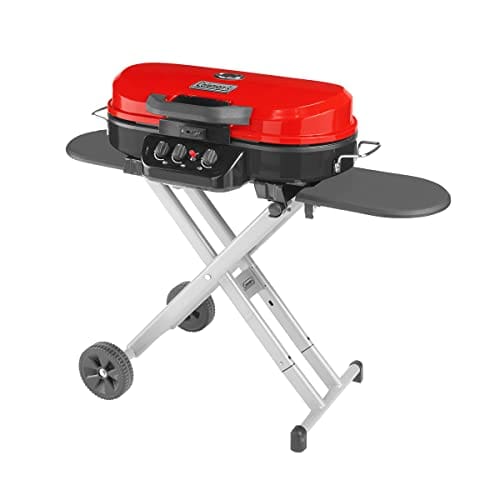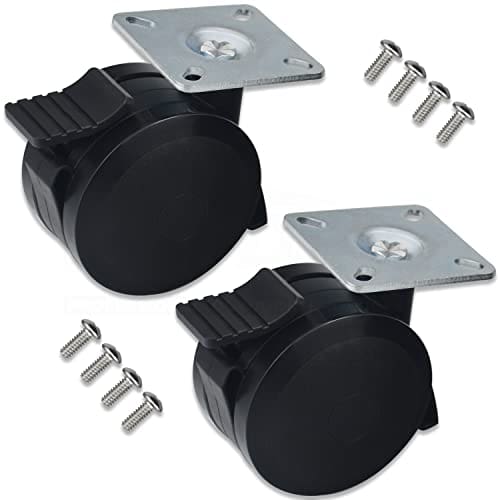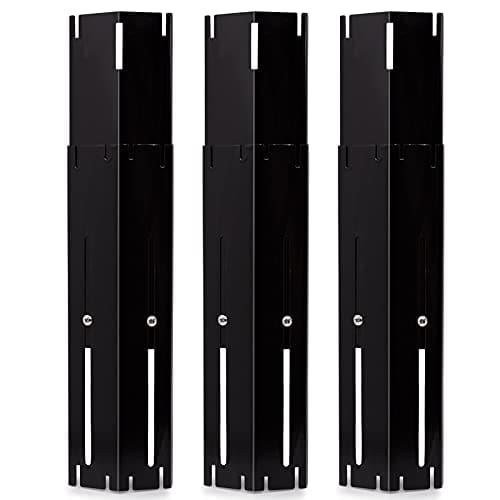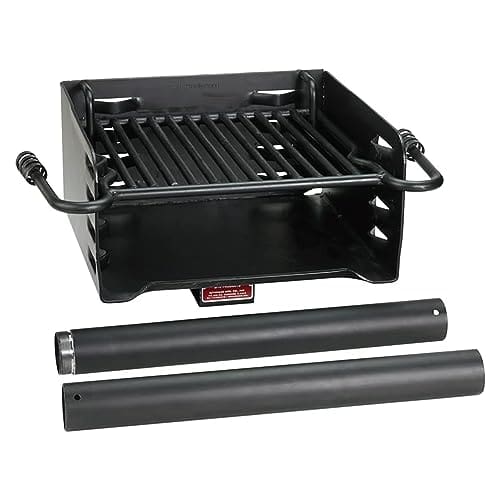Exploring Different Types of Grill Airflow Vents and Their Features
Are you a grill aficionado looking to elevate your grilling game? Or maybe you’re a barbecue enthusiast seeking to unlock the full potential of your grill setup. Whether you fall into one of these categories or simply have a curious mind, this blog post is designed to pique your interest and provide valuable insights. Today, we will be exploring the world of grill airflow vents and their features. These seemingly small components play a crucial role in the grilling process, influencing heat distribution and control. By understanding the different types of airflow vents available, you will have the knowledge to optimize your grilling experience and achieve grill perfection. So, saddle up and join us on this journey as we delve into the fascinating world of grill airflow vents.
Top Grills with Enhanced Airflow Vents for Perfectly Grilled Delights
Overview of Grill Airflow Vents
Grill airflow vents are an essential component of any grill, whether it be charcoal, gas, or electric. These vents allow for the proper control of temperature, ensure even heat distribution, and help prevent flare-ups. Understanding how to effectively use these vents can greatly enhance your grilling experience and help you achieve perfectly cooked meals every time.
Controlling Temperature with Airflow Vents
One of the primary functions of grill airflow vents is to control the temperature inside the grill. By adjusting the vents, you can increase or decrease the amount of oxygen that reaches the fuel source, thereby regulating the heat output. Here’s how it works:
- Opening the Vents: Opening the vents allows for more oxygen to enter the grill, resulting in higher temperatures. This is useful for searing steaks or achieving a quick sear on burgers.
- Closing the Vents: Closing the vents restricts the flow of oxygen, reducing the heat output and slowing down the cooking process. This is ideal for low and slow cooking, such as smoking ribs or brisket.
Maintaining Even Heat Distribution
Proper airflow is crucial for maintaining even heat distribution across the grill. When the vents are correctly adjusted, hot air is evenly circulated throughout the cooking chamber, preventing hot spots and ensuring that your food cooks evenly.
- Top Vents: The top vents, also known as chimney vents or exhaust vents, are typically located on the lid of the grill. These vents allow hot air to escape, regulating the overall temperature inside the grill and preventing it from becoming too hot.
- Bottom Vents: The bottom vents, often found on the lower portion of the grill, help control the inflow of oxygen and fuel the fire. By adjusting the bottom vents, you can increase or decrease the intensity of the flames, thus impacting the heat distribution within the grill.
Preventing Flare-ups
Flare-ups can be a griller’s worst nightmare, but with proper airflow control, they can be minimized or eliminated entirely. Flare-ups occur when fat drippings come into direct contact with flames, causing sudden bursts of intense heat. Here’s how grill airflow vents can help prevent them:
- Controlling Oxygen Flow: By adjusting the vents, you can limit the amount of oxygen that reaches the flames. This reduces the likelihood of flare-ups by decreasing the intensity of the fire.
- Channeling Grease: Some grills are equipped with grease management systems that use airflow vents to channel excess grease away from the flames. This helps prevent flare-ups by reducing the fuel source for the fire.
Benefits of Using Grill Airflow Vents
Using grill airflow vents offers several key benefits that can enhance your grilling experience:
- Temperature Control: Easily adjust the vents to achieve the desired cooking temperature, allowing you to cook a wide range of foods with precision.
- Even Heat Distribution: Proper airflow ensures your food cooks evenly, eliminating the risk of unevenly cooked or charred portions.
- Flare-up Prevention: With controlled oxygen flow and efficient grease management, you can minimize or eliminate flare-ups that can ruin your food.
- Versatility: The ability to control airflow allows you to experiment with different cooking techniques, such as searing, smoking, or indirect grilling, all with one grill.
In conclusion, understanding how to use grill airflow vents effectively is essential for achieving optimal grilling results. By controlling the temperature, maintaining even heat distribution, and preventing flare-ups, you can elevate your grilling game and impress your family and friends with perfectly cooked meals every time.
Note: This article provides a general overview of grill airflow vents and their functions. Always refer to your grill’s user manual or consult the manufacturer for specific instructions and recommended techniques.
Types of Grill Airflow Vents
When it comes to grilling, achieving optimal airflow is crucial for the success of your cooking. Proper ventilation helps regulate temperature, control heat distribution, and prevent flare-ups. To ensure efficient airflow, grills are equipped with various types of vents. In this article, we will explore the different types of grill airflow vents available in the market, discussing their features, benefits, and suitability for different grilling methods and food types.
Top Vents
Top vents, also known as chimney vents or exhaust vents, are located on the lid or top section of the grill. They are designed to release smoke, steam, and excess heat from the cooking chamber. Here are some key features and benefits of top vents:
- Features:
- Typically adjustable, allowing you to control the amount of airflow according to your cooking needs.
- May include a damper or baffle system to further regulate airflow and temperature.
- Benefits:
- Efficiently removes excess heat and smoke, preventing your food from becoming overly smoky.
- Allows for better control of temperature by adjusting the vent opening, reducing the risk of flare-ups.
- Facilitates even heat distribution throughout the grill, ensuring uniform cooking of your food.
Top vents are suitable for various grilling methods, including smoking, slow cooking, and indirect grilling. They work exceptionally well with:
- Large cuts of meat, such as whole chickens or roasts, where consistent heat circulation is essential.
- Recipes that require smoking, as the top vent aids in maintaining a steady flow of smoke throughout the grill.
Bottom Vents
Located at the bottom of the grill, near the charcoal or gas burners, bottom vents are responsible for supplying air to the fire and controlling its intensity. Here are some features and benefits of bottom vents:
- Features:
- Usually adjustable, allowing you to regulate the amount of oxygen reaching the fire.
- May include a sliding mechanism or rotating disk for easy control.
- Benefits:
- Provides oxygen for efficient combustion, resulting in a hotter fire and faster preheating.
- Allows for precise control over the intensity of heat, making it easy to adjust the grill’s temperature.
- Helps avoid flare-ups by restricting airflow when needed.
Bottom vents are suitable for a wide range of grilling methods, making them a versatile choice. They work well when grilling:
- Foods that require high heat, such as steaks or burgers, as the adjustable bottom vents allow for easy heat control.
- Quick-cooking recipes where fast preheating is essential to save time.
Side Vents
Some grills, especially larger ones, offer side vents in addition to top and bottom vents. These vents are designed to improve the overall airflow and enhance cooking performance. Here are the key features and benefits of side vents:
- Features:
- Positioned on the sides of the grill, allowing for better airflow circulation.
- Adjustable to regulate the intake of fresh air and control heat distribution.
- Benefits:
- Enhances the overall ventilation and cooking efficiency by circulating the air inside the grill.
- Helps maintain a consistent temperature throughout the grilling process.
- Provides additional heat control options, especially in larger grills with multiple heat zones.
Side vents are suitable for all grilling methods and particularly useful when cooking:
- Large quantities of food, as they help maintain consistent heat distribution across the grill grates.
- Recipes that require different temperature zones, as the adjustable side vents allow for customized heat management.
Adjustable Vents
Adjustable vents, as the name suggests, provide the flexibility to regulate airflow both at the top and bottom of the grill. They offer the combined benefits of top and bottom vents and are commonly found in high-end grills. Here are the features and benefits of adjustable vents:
- Features:
- Allows for independent adjustment of both top and bottom vents.
- Offers precise control over temperature and airflow, providing a customized grilling experience.
- Some models may include temperature gauges or control knobs for added convenience.
- Benefits:
- Gives you full control over the grilling environment, allowing for consistent results every time.
- Facilitates versatile grilling techniques, from low and slow smoking to high-temperature searing.
- Provides the ability to fine-tune heat distribution, ideal for recipes with varying cooking requirements.
Adjustable vents are suitable for a variety of grilling methods and are highly recommended for:
- Grill enthusiasts who desire precise control over their cooking, allowing them to experiment with different techniques and recipes.
- Advanced grilling techniques such as reverse searing, where precise temperature control is essential.
To summarize, understanding the different types of grill airflow vents available can significantly enhance your grilling experience. Whether you prefer smoking, slow cooking, or high-heat grilling, there is a vent design suitable for your needs. By selecting the right vent type, you can easily regulate temperature, control heat distribution, and ultimately achieve delicious grilled dishes.
Factors to Consider When Choosing Grill Airflow Vents
Grill airflow vents play a crucial role in controlling the temperature and airflow within your grill. They allow you to regulate the amount of oxygen entering the grill, which in turn affects the intensity of the fire and the overall cooking process. When it comes to choosing the right vents for your grill, there are several key factors you should consider. In this blog section, we will outline these factors to help you make an informed decision.
Material
The material of the airflow vents can greatly affect their durability and performance. Here are some common material options to consider:
- Stainless steel: Stainless steel vents are highly durable, resistant to corrosion, and can withstand high temperatures.
- Cast iron: Cast iron vents are known for retaining heat and providing excellent heat distribution.
- Aluminum: Aluminum vents are lightweight and can offer good heat conductivity.
Size and Shape
The size and shape of the vents can impact the overall airflow in your grill. Consider the following factors:
- Number of vents: Determine the number of vents you need based on the size and type of your grill. More vents usually allow for better temperature control.
- Vent shape: Some vents are circular, while others are rectangular or square. The shape you choose depends on your grill’s design and personal preference.
Ease of Use
Ease of use is an important factor to consider, especially if you’re new to grilling or prefer simplicity. Look for the following features:
- Adjustable vents: Opt for vents that can be easily opened or closed to control airflow and temperature without hassle.
- Clear markings: Vents with clear markings or indicators make it easier to remember your preferred settings.
Maintenance
Proper maintenance of your grill is essential for its longevity and optimal performance. Consider the following maintenance requirements:
- Cleanability: Choose vents that are easy to clean and do not require excessive effort to remove grease or debris.
- Rust resistance: Opt for vents that are rust-resistant or have a protective coating to prevent corrosion.
Additional Features
Some vents may come with additional features that can enhance your grilling experience. Consider the following options:
- Ash catcher: Vents with built-in ash catchers can help reduce the mess and make cleaning easier.
- Dual-function vents: Some vents may also double as smoke vents, allowing you to control both temperature and smoke output.
Understanding the Benefits and Selection of Grill Airflow Vents
In conclusion, this blog post has provided a comprehensive overview of the various types of grill airflow vents and their features. It has emphasized the significance of having adequate ventilation for optimal grilling performance. By understanding the specific characteristics of different vents, you are now equipped to make an informed decision when it comes to choosing the right vents for your grilling needs. Additionally, you have been equipped with valuable maintenance and cleaning tips to ensure the longevity and effective functionality of your vents. By implementing these recommendations, you can elevate your grilling experience and achieve consistently delicious and evenly cooked meals. Happy grilling!
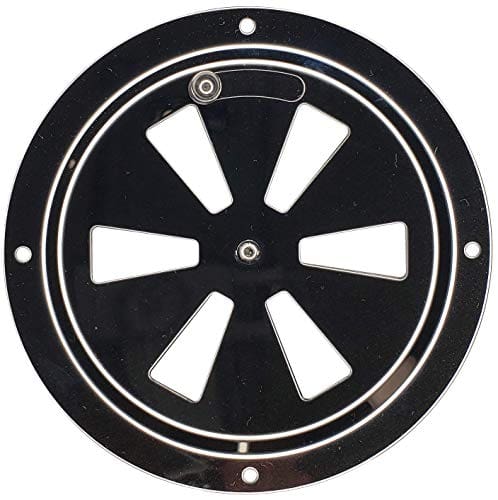



![12"w X 4"h Adjustable AIR Supply Diffuser - HVAC Vent Cover Sidewall or Ceiling - Grille Register - High Airflow - White [Outer Dimensions: 13.75"w X 5.75"h]](https://m.media-amazon.com/images/I/3172vBSaKIL.jpg)
![14"w X 8"h 2-Way-Flat Stamped Steel - Vent Cover - Grille Register - Sidewall or Ceiling - High Airflow - White [Outer Dimensions: 15.75"w X 9.75"h]](https://m.media-amazon.com/images/I/41YOXGZw+7L.jpg)

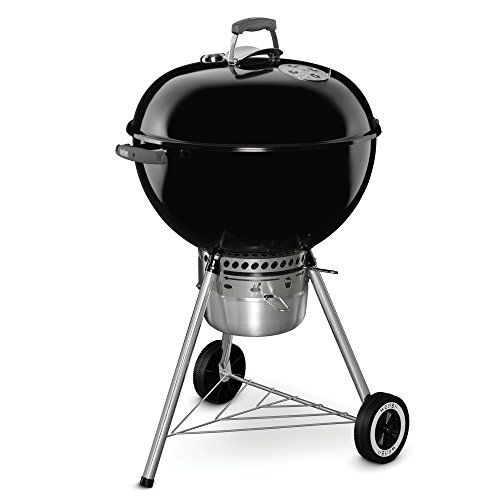






![14"w X 6"h Aluminum Adjustable Return/Supply HVAC Air Grille - Full Control Horizontal Airflow Direction - Vent Duct Cover - Single Deflection [Outer Dimensions: 15.85"w X 7.85"h]](https://m.media-amazon.com/images/I/41PShfIRc2L.jpg)

